Isognathus allamandae
|
|
Updated as per CATE (Venezuela; Brazil); May 14, 2011
Updated as per "A Hawk Moths fauna of southern Maranhão state, Brazil, ... "; NEVA: Jahrgang 34 Heft 3 November 2013; via Jean Haxaire; April 5, 2014
Updated as per personal communication with Francierlem Oliveira (Rio Grande do Norte, Brazil, November); November 2, 2016
Updated as per personal communication with Eduardo Rex (larva, Sao Carlos, Sao Paulo, Brazil, March 16, 2019); March 18, 2019
Updated as per personal communication with Francierlem Oliveira (Rio Grande do Norte, Brazil, November); November 2, 2016
Updated as per personal communication with Acervo Professor Mauricio Ferreira / Sebo Jundiaí (larva, Guararapes, Sao Paulo, Brazil, May 13, 2019); May 14, 2019
|
Isognathus allamandae
B. P. Clark, 1920
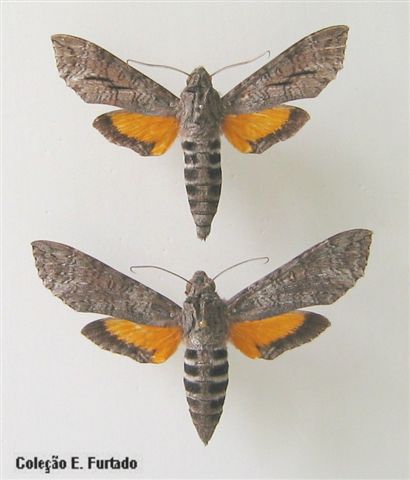
Isognathus allamandae, Pair: male 68 mm; female 78 mm, June,
Reserva Vale da Solidão, 14o22’S 56o07’W, 450 m, Diamantino,
Mato Grosso, Brazil,
courtesy of Eurides Furtado.
This site has been created by Bill Oehlke.
Comments, suggestions and/or additional information are welcomed by Bill.
TAXONOMY:
Family: Sphingidae, Latreille, 1802
Subfamily: Macroglossinae, Harris, 1839
Tribe: Dilophonotini, Burmeister, 1878
Genus: Isognathus G. Felder & R. Felder, 1862 ...........
Species: allamandae B. P. Clark, 1920
|
DISTRIBUTION:
Isognathus allamandae (Wing span: male: 68mm; females: 78mm),
flies in
Brazil (specimen type locality): Para; Pernambuco; Rio Grande do Norte (FO); Mato Grosso; Minas Gerais; Sao Paulo: Sao Carlos (ER), Guararapes (MF);
southern Maranhao; to
Venezuela.
There might be populations in eastern Colombia (WO??).
Very similar to Isognathus australis, but allamande has narrower wings.
The male Forewing distal margin is dentate, convex, and obtusely angled at M3.
30 mm.
Forewing upperside more uniform in colour than in Isognathus australis; grey, with darker markings and lightly shaded with white; curved white
line running between Rs1 and M1 in Isognathus australis represented by a straighter, double grey line; black streaks running between M3 and CuA1,
and CuA1 and CuA2, both heavier than in Isognathus australis.
Yellow band along inner margin of forewing upperside more extended than in Isognathus australis.
Hindwing upperside marginal band narrower than in Isognathus australis.
Yellow basal area of hindwing underside more extended than in Isognathus australis reaching Rs; dark marginal border only 1 mm wide at hind angle (4 mm in Isognathus australis).
Female: 35 mm.
As male but black streaks running between M3 and CuA1, and CuA1 and CuA2, both absent. CATE
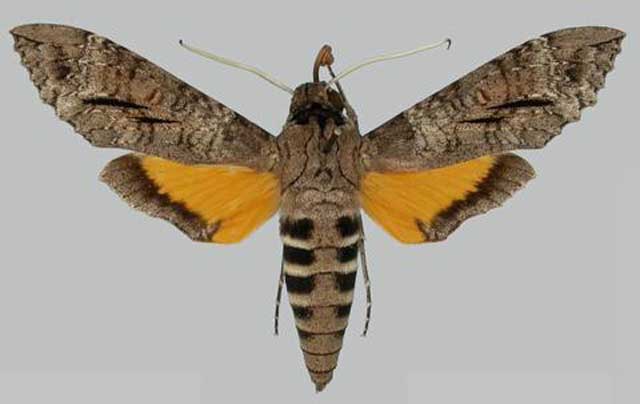
Isognathus allamandae male, BMNHE, via Ian Kitching, creative commons
FLIGHT TIMES:
There are probably several flights throughout the year. Specimens have beeen recorded for June. If my identification of the moth from
Rio Grande do Norte is correct, there is an October-November flight in that state.
ECLOSION:
Moths emerge from pupae in thin-walled cocoons under leaf litter.
SCENTING AND MATING:
Females call in the males with a pheromone released from a gland at the tip of
the abdomen. Adults nectar at flowers, including petunia.
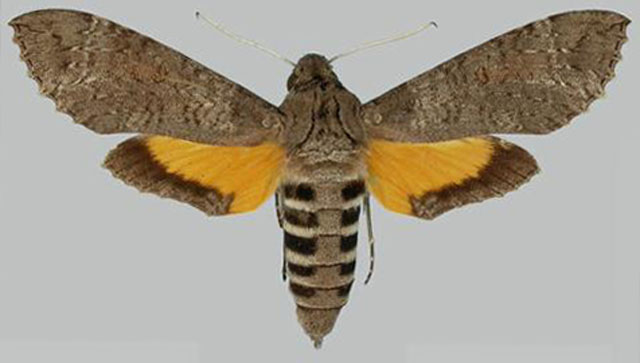
Isognathus allamandae female, BMNHE, via Ian Kitching, creative commons
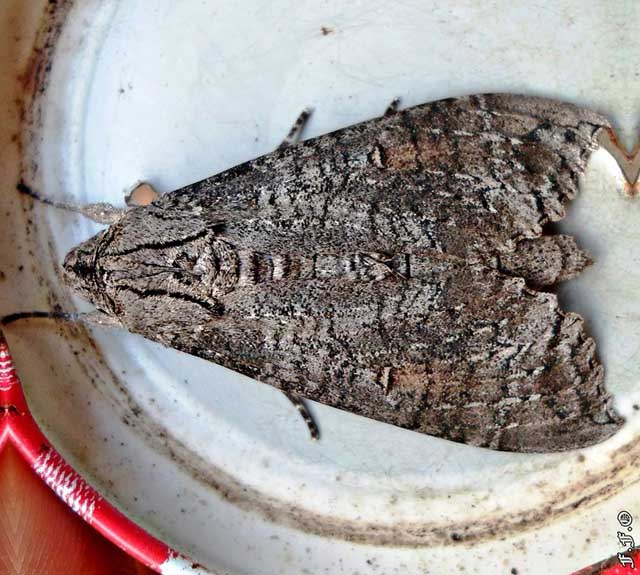
Isognathus allamandae female, Extremoz, Rio Grande do Norte, Brazil,
November 2, 2016, courtesy of Francierlem Oliveira, id by Bill Oehlke
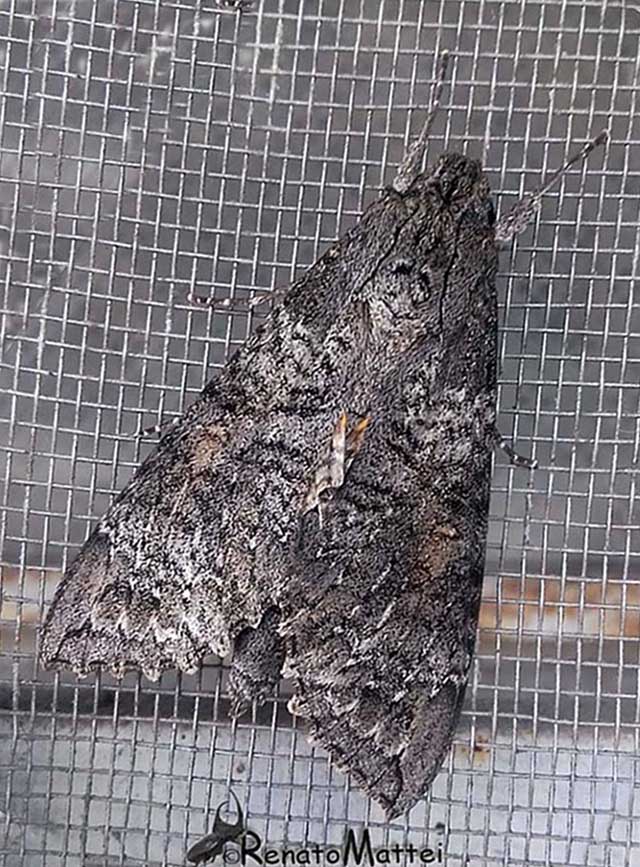
Isognathus allamande female, Puerto Ayacucho, Amazonas, Venezuela,
August 19, 2018, courtesy of Renato Mattei, id by Bill oehlke.
EGGS, LARVAE, PUPAE:
Females lay eggs on Apocynaceae including Allamanda blanchetii and Allamanda cathartica.
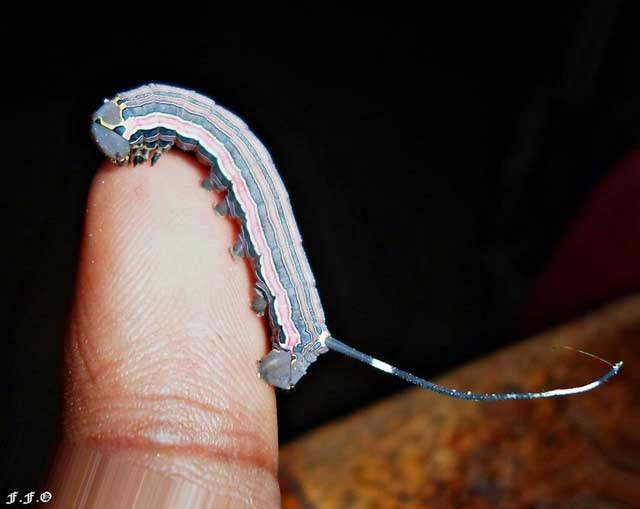
Isognathus allamandae final instar, Extremoz, Rio Grande do Norte, Brazil,
courtesy of Francierlem Oliveira, id by Bill Oehlke
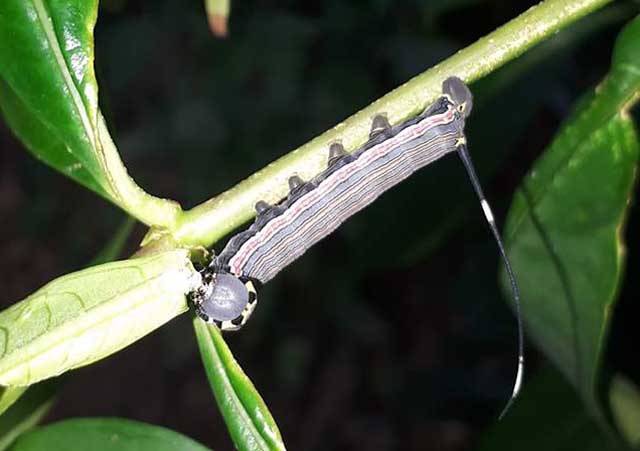
Isognathus allamandae final instar, Sao Carlos, Sao Paulo, Brazil,
March 16, 2019, courtesy of Eduardo Rex, id by Bill Oehlke
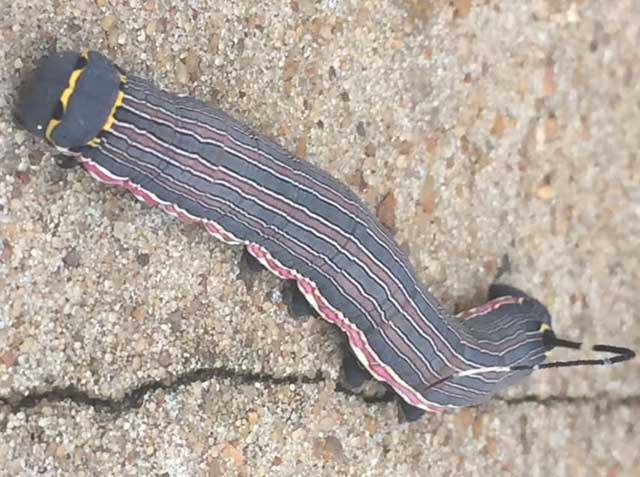
Isognathus allamandae final instar, Guararapes, SaoPaulo, Brazil,
May 13, 2019, courtesy of Mauricio Ferreira, id by Bill Oehlke
Larvae pupate in cocoons spun amongst leaf litter.
Return to Sphingidae Index
Return to Dilophonotini Tribe







